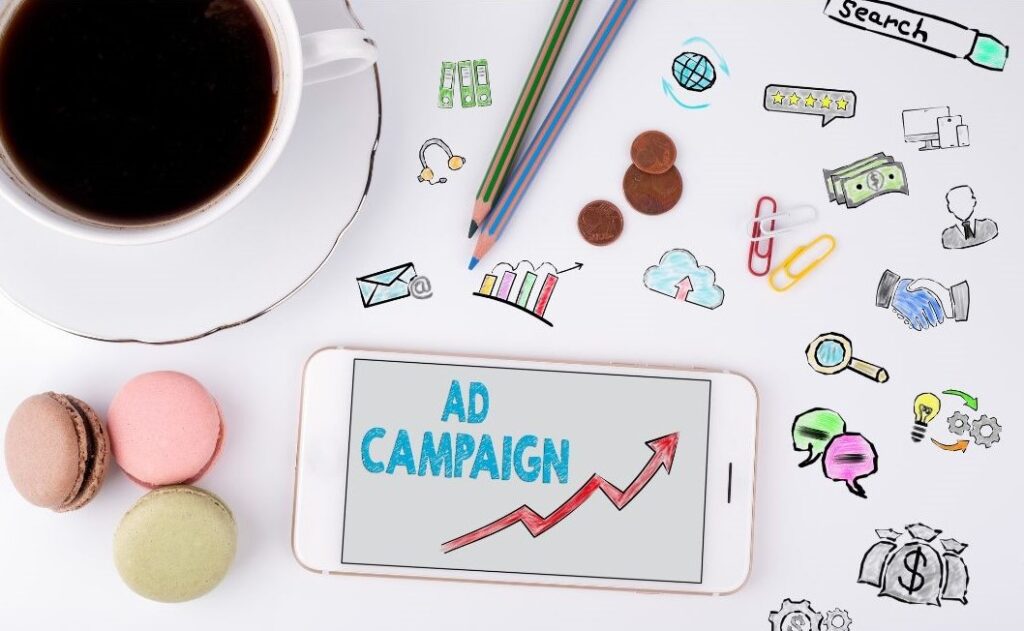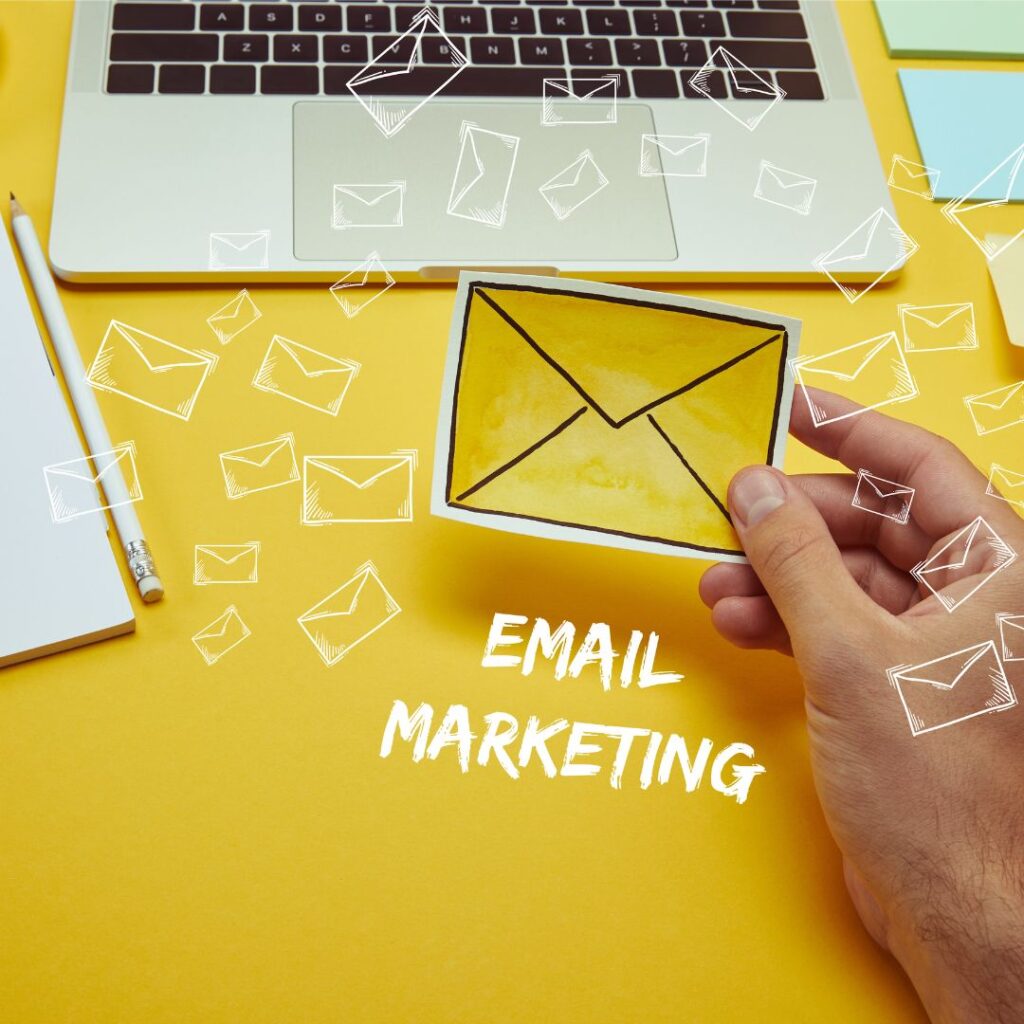Imagine that a potential customer heard about your business—perhaps through a friend, a local ad, or a casual conversation. Naturally, their next move is to look you up online. What they discover in that moment can either captivate them or drive them away. A well-crafted website doesn’t just attract attention. It is like a digital storefront that works 24/7, representing your brand, engaging customers, and driving sales even while you sleep.
Whether you’re a small business owner eager to establish a strong online presence or an experienced entrepreneur looking to refresh your site, mastering the art of website design is a must. Our Guide to Website Design will provide you with the insights and strategies needed to create a site that stands out in a crowded online landscape.
Key Takeaways
- User Experience: A great website design prioritizes user experience (UX). This means easy navigation, fast load times, and a responsive design that works well on both desktop and mobile devices. A positive UX keeps visitors engaged and encourages them to explore more of your content.
- Visual Appeal: First impressions count. Your website’s visual design should reflect your brand’s identity and appeal to your target audience. This includes choosing the right color schemes, typography, and images that convey your brand’s message effectively.
- Content: A beautiful design is only effective if it’s backed by high-quality content. Ensure your website’s content is clear, concise, and relevant to your audience. This not only helps in SEO but also keeps visitors informed and engaged.
- SEO Best Practices: Implementing SEO best practices in your website design is crucial for visibility. From optimizing images and meta tags to ensuring mobile-friendliness, these elements help your site rank higher on search engines, driving more organic traffic.
- Ongoing Optimization: A great website requires ongoing attention. Regular updates, fresh content, and performance monitoring ensure your site continues to meet the needs of your audience and stays competitive in search rankings.
What is Website Design?
Website design involves creating and arranging the visual elements, layout, and functionality of a website. This process covers aesthetic aspects like color schemes, typography, and images, as well as technical components that ensure a site is user-friendly, responsive, and optimized for performance.
The goal is to provide an engaging and intuitive experience, making it easy for visitors to navigate, find information, and take desired actions, such as making a purchase or contacting your business. Whether you’re building a simple blog or a complex e-commerce site, good design is crucial for attracting and retaining users, enhancing your brand’s online presence, and achieving your business goals.
Creating a website goes beyond just establishing an online presence. It’s about crafting an experience that reflects your brand, connects with a community, and meets the needs of your audience. Start by understanding what makes your business unique, then translate that into a design that stands out.
Why is Website Design Important
Website design is crucial because it shapes the first impression of your business and significantly influences user experience. A well-designed site enhances credibility and trust, ensuring that visitors find your content easily and navigate seamlessly across different devices.
Good design also boosts search engine rankings, drives conversions through strategic elements like clear calls-to-action, and reinforces your brand identity with consistent visual elements. Additionally, an efficient website design improves performance by ensuring fast loading times and facilitates easy updates and maintenance. Overall, a strong website design provides a competitive edge, supports marketing efforts, and enables better analytics for informed decision-making.
Website First Impressions
Imagine walking into a store where everything is chaotic and unappealing. You’d likely walk right out, right? The same goes for your website design. In fact, research shows that visitors form an opinion about your website in just 0.05 seconds. That’s barely even a blink! A well-designed website instantly builds trust and credibility, making visitors more likely to stay and explore your offerings.
User Experience (UX)
Good website design isn’t just about looking pretty; it’s about usability. Your website should be easy to navigate, with clear menus and a logical layout. Think about it—if your visitors can’t find what they’re looking for quickly, they’ll move on to a competitor’s site. Prioritizing user experience keeps visitors engaged and encourages them to take action, whether that’s making a purchase, signing up for a newsletter, or contacting you for more information.
Mobile Responsiveness is Non-Negotiable
Did you know that more than half of global web traffic comes from mobile devices? If your website design isn’t mobile-friendly, you’re essentially closing the door on a huge segment of potential customers. A responsive website design ensures that your website looks and functions well on any device, providing a seamless experience for all users.
Building Brand Identity
Your website is an extension of your brand. Consistent colors, fonts, and imagery help reinforce your brand identity, making it more memorable for visitors. When your website reflects your brand’s personality, it creates a cohesive experience that resonates with your audience. This can lead to stronger brand loyalty and recognition in the long run.
SEO Benefits
Good design goes hand-in-hand with good SEO (Search Engine Optimization). A clean, well-structured website is easier for search engines like Google to crawl and index. Elements such as fast loading times, mobile optimization, and proper use of headings can give your site an SEO boost, making it easier for potential customers to find you.
Competitive Edge
In a crowded marketplace, standing out is vital. A professionally designed website can set you apart from competitors who might still be using outdated or templated designs. Investing in quality design shows that you care about your business and your customers, giving you an edge over the competition.
Conversion Rates
Ultimately, the goal of your website is to convert visitors into customers. Thoughtful website design can guide visitors through the buyer’s journey with clear calls to action and an intuitive user flow. By making it easy for visitors to take the next step, you can improve your conversion rates and drive more business.
Website design isn’t just about aesthetics; it’s a powerful tool that can impact every aspect of your business. From making great first impressions to boosting your SEO, investing in quality design can pay off in spades.
7 Key Elements of Effective Website Design
 Creating a stunning and successful website design is a bit like crafting the perfect recipe – you need the right ingredients in just the right amounts. Below are essential elements that will make your business website not only look amazing but also work like a charm!
Creating a stunning and successful website design is a bit like crafting the perfect recipe – you need the right ingredients in just the right amounts. Below are essential elements that will make your business website not only look amazing but also work like a charm!
1. User-Friendly Navigation
Your website’s navigation is the backbone of the user experience. Think of it as a roadmap that guides visitors to where they need to go. Here are some tips for making navigation a breeze:
- Keep it simple: Use clear, concise menu labels.
- Logical structure: Organize content in a way that makes sense to your visitors.
- Consistency: Ensure the navigation is consistent across all pages.
2. Mobile Responsiveness
In today’s mobile-first world, having a website that looks great on all devices is non-negotiable. Make sure your design is:
- Responsive: Adjusts seamlessly to different screen sizes.
- Fast-loading: Mobile users expect quick load times.
- Touch-friendly: Buttons and links should be easy to click on a touchscreen.
3. Visually Appealing Design
Your website is often the first impression potential customers have of your business. A visually appealing website design can make all the difference:
- Use high-quality images: Invest in professional photos that reflect your brand.
- Consistent color scheme: Stick to a color palette that aligns with your brand’s identity.
- Readable fonts: Choose fonts that are easy to read on any device.
4. Clear Calls to Action (CTAs)
CTAs are the signposts that tell your visitors what to do next. Whether it’s “Buy Now,” “Contact Us,” or “Learn More,” your CTAs should be:
- Action-oriented: Use compelling verbs to encourage clicks.
- Prominent: Make them stand out with contrasting colors.
- Specific: Clearly communicate the benefit of taking action.
5. Quality Content
Content is king, and it’s essential for both engaging your visitors and optimizing your website for search engines. Focus on:
- Relevant information: Provide valuable content that answers your audience’s questions.
- Regular updates: Keep your content fresh and up-to-date.
- Multimedia elements: Use videos, infographics, and images to break up text and keep readers engaged.
6. Fast Load Times
No one likes a slow website. Speed is critical for retaining visitors and improving your site’s search engine ranking:
- Optimize images: Compress images without sacrificing quality.
- Minimize code: Clean up your HTML, CSS, and JavaScript.
- Use caching: Implement browser and server caching techniques.
7. Secure and Accessible
Your website should be a safe and welcoming place for all visitors:
- SSL certificates: Encrypt data to protect user information.
- Accessibility: Ensure your site is usable by people with disabilities, following WCAG guidelines.
Choosing the Right Platform for Your Business Website
One of the first big decisions you’ll need to make is choosing the right platform for your website. Below are some of the major players in website design platforms.
- WordPress: This one’s a classic. With its vast array of plugins and themes, WordPress can be tailored to fit just about any business need.
- Wix: Known for its drag-and-drop ease, Wix is perfect for those who prefer a more hands-on, intuitive approach.
- Shopify: If you’re running an e-commerce business, Shopify is a dream come true. It’s designed specifically to make selling online as smooth as possible.
- Squarespace: This platform is all about sleek, modern designs. Squarespace is great for businesses looking to make a strong visual impact.
What to Consider When Choosing a Platform
Choosing the right platform is a crucial decision for businesses, developers, and individuals alike. Whether you’re launching a new website, developing an application, or selecting a social media outlet, the platform you choose can significantly impact your project’s success. From evaluating technical capabilities and scalability to considering cost and user support, we’ll cover everything you need to make an informed choice that aligns with your goals and needs.
Ease of Use
Ask yourself, “How tech-savvy am I?” If the answer is “not very,” you might want to steer towards platforms like Wix or Squarespace which offer user-friendly interfaces. These platforms allow you to easily drag and drop elements, making the design process super straightforward.
Customization
Are you a stickler for details? If you want complete control over every aspect of your site, WordPress is fantastic for customization. With thousands of themes and plugins, you can tweak your site to your heart’s content.
Cost
Your budget is another important factor. Platforms like WordPress and Wix offer free plans, but for more advanced features, you’ll need to upgrade to a paid plan. Shopify, on the other hand, is a bit pricier but offers extensive features tailored for e-commerce.
Scalability
Thinking long-term is crucial. If you plan on growing your business quickly, you’ll need a platform that can grow with you. WordPress is particularly strong in this regard, as it can handle both small blogs and large corporate websites.
Integrations and Support
Another thing to look out for in your website design is the ability to integrate with other tools and services you might be using, like email marketing platforms or CRM systems. Shopify, for instance, offers extensive integrations which can be very handy for e-commerce businesses.
Also, consider the level of support offered. Some platforms provide 24/7 customer service, while others might have limited support hours. Having robust support can be a lifesaver, especially if you’re new to website management.
7 SEO Best Practices for Website Design
 Imagine having a beautifully designed website but no visitors—kind of like opening a fancy new store and having no customers walk in. Having a beautiful website design is only part of the equation for online success. To truly maximize your website’s potential, it’s essential to incorporate Search Engine Optimization (SEO) best practices from the ground up.
Imagine having a beautifully designed website but no visitors—kind of like opening a fancy new store and having no customers walk in. Having a beautiful website design is only part of the equation for online success. To truly maximize your website’s potential, it’s essential to incorporate Search Engine Optimization (SEO) best practices from the ground up.
Effective SEO not only improves your site’s visibility in search engine results but also enhances user experience and drives organic traffic.
1. Use Relevant Keywords
You need to sprinkle relevant keywords throughout your website. Think about what words or phrases your potential customers might type into a search engine to find a business like yours. Are you a local bakery? Keywords like “best cupcakes in Roseville” or “Roseville bakery” should be on your radar.
Pro Tip: Use tools like Google Keyword Planner or Ubersuggest to find out what people are searching for in your industry. But remember, don’t go overboard! Keyword stuffing can actually hurt your rankings.
2. Optimize Your Site’s Structure
Google loves a well-organized site—think of it like a tidy store where everything is easy to find. Make sure your pages are logically arranged, with a clear hierarchy. Your URLs should also be clean and descriptive. For example, www.yourbusiness.com/services is much better than www.yourbusiness.com/page123.
Pro Tip: Use breadcrumbs on your site to make navigation easier for users and search engines alike.
3. Mobile-Friendliness is a Must
More people are browsing on their phones than ever before. If your site isn’t mobile-friendly, you’re likely losing a lot of potential customers. Google also factors in mobile-friendliness when ranking websites.
Pro Tip: Use Google’s Mobile-Friendly Test to see how your site performs on mobile devices. Make adjustments as needed to ensure a smooth user experience.
4. Speed Matters
Ever clicked on a website and waited…and waited…and then just gave up? Slow loading times can deter visitors faster than you can say, “Where did they go?” Google also penalizes slow websites, so make sure your pages load quickly.
Pro Tip: Use tools like GTmetrix or Google PageSpeed Insights to see how fast your site loads and what you can do to speed things up. Compress images, use a content delivery network (CDN), and minimize unnecessary code.
5. Quality Content
Google loves fresh, high-quality content. Regularly update your website with blog posts, articles, or news about your industry. This not only helps with SEO but also establishes your business as an authority in your field.
Pro Tip: Consider a content calendar to keep track of your posts and ensure you’re consistently publishing great content.
6. Use Meta Tags Wisely
Meta tags, like your title tags and meta descriptions, play a crucial role in how search engines understand your content. Make sure these are descriptive and include your main keywords.
Pro Tip: Keep your meta descriptions under 160 characters to ensure they’re fully displayed in search results.
7. Secure Your Site
Security isn’t just for peace of mind; it’s also a ranking factor. Ensure your website uses HTTPS, which encrypts data between the browser and the server. This not only makes your site more secure but also boosts your SEO.
Pro Tip: Most hosting providers offer SSL certificates, which you can activate to secure your site.
Case Study: Brand Lift 360 & Exceptional Website Design
Let’s explore an inspiring case study that highlights the transformative impact of outstanding website design. We’re focusing on our very own Brand Lift 360, a marketing agency renowned for elevating businesses through our innovative and customized website design services.
The Initial Challenge
Every journey starts with a challenge. For many businesses, the challenge lies in standing out in a crowded digital marketplace. This was the case for our client, a local roofing company that had a loyal customer base but struggled to attract online traffic and conversions.
The Brand Lift 360 Approach
Brand Lift 360’s approach is both strategic and result driven. We began by thoroughly understanding the client’s brand, goals, and target audience. Here are the key steps we took:
- Comprehensive Audit: Analyzing the existing website design to identify strengths, weaknesses, and areas for improvement.
- User Experience (UX) Focus: Ensuring the site was user-friendly, with intuitive navigation and a clean, appealing design.
- Responsive Design: Making sure the website design looked and performed equally well on desktops, tablets, and smartphones.
- SEO Integration: Implementing best practices for search engine optimization to improve visibility and rankings.
- Content Strategy: Crafting engaging and relevant content to keep visitors on the site longer and encourage conversions.
The Results
The results were nothing short of spectacular. Within months of launching the revised website design, this company saw a significant increase in both traffic and scheduled consults. Let’s break down the key metrics:
- Increased Traffic: Organic traffic surged by 45%, thanks to effective SEO strategies and improved user experience.
- Bounce Rate Reduction: The bounce rate dropped by 30%, indicating that visitors were finding what they needed and staying longer.
- Higher Conversion Rates: Conversion rates improved by 20%, directly translating to increased sales and revenue.
Client Testimonials
But don’t just take our word for it. Here’s what the client had to say:
“Working with Brand Lift 360 transformed our business. Their attention to detail and understanding of our needs resulted in a website that truly represents our brand. We’ve seen a dramatic increase in online engagement and sales. We couldn’t be happier!”
Lessons for Your Business
So, what can businesses learn from this case study? Here are a few takeaways:
- Understand Your Audience: A deep understanding of your target audience is crucial for effective website design.
- Invest in UX: A user-friendly site keeps visitors engaged and encourages them to explore more.
- SEO is Key: Don’t underestimate the power of SEO in driving organic traffic to your site.
- Continuous Improvement: Regularly update and refine your website design to keep it aligned with evolving trends and customer needs.
Brand Lift 360’s success with our client illustrates the profound impact that exceptional website design can have on a business. By focusing on user experience, responsiveness, and SEO, we were able to elevate our client’s brand and drive tangible results.
Key Points to Consider
Elevating your business with top-notch website design is an ongoing commitment rather than a one-time task. Investing in professional design, prioritizing user experience, and keeping content fresh and optimized are vital steps toward long-term success.
In summary, creating an effective and quality website involves several key factors that together craft a seamless and engaging user experience. These elements are crucial for establishing a strong online presence and achieving sustained success. As you design and refine your website, keep these key points in mind to ensure it meets your audience’s needs and stands out in a competitive digital landscape.
So, why wait? Start today and discover how a well-designed website can transform your business. Remember, your website design is an extension of your brand – make it count!
Happy Building!
Contact Brand Lift 360 for website design services that are tailored to your business.
FAQ Section for Website Design
1. Why is having a well-designed website important for my business? A well-designed website enhances user experience, establishes credibility, and helps convert visitors into customers. It’s often the first impression potential clients have of your business, making it crucial for attracting and retaining customers.
2. How do I choose the right website design for my business? Consider your target audience, brand identity, and the type of content you’ll be showcasing. A professional web designer such as Brand Lift 360 can help create a design that aligns with your business goals and appeals to your audience.
3. What are the key elements of a good website design? Key elements include a clean layout, intuitive navigation, fast loading times, mobile responsiveness, engaging visuals, and clear calls to action. Ensuring your website design is user-friendly and visually appealing is essential.
4. How can I improve my website’s loading speed? Optimize images, use a content delivery network (CDN), minimize HTTP requests, enable browser caching, and reduce server response time. Tools like Google PageSpeed Insights can provide specific recommendations for improvement.
5. What is a responsive website design and why is it important? Responsive website design ensures that your website looks and functions well on all devices, including desktops, tablets, and smartphones. It’s important because it provides a consistent user experience, improves SEO rankings, and increases engagement.
6. What is the difference between UI and UX design? A: UI (User Interface) design focuses on the look and layout of a website, including buttons, icons, and overall aesthetics. UX (User Experience) design is about the overall feel of the website and how users interact with it. Both are crucial for a successful website.
7. Should I hire a professional website designer or use a DIY website builder? This depends on your needs and budget. Professional web designers offer customized solutions and expertise, ensuring a unique and optimized website. DIY website builders are more cost-effective and user-friendly but may lack customization and advanced features.
8. How do I choose the right web designer or agency? Look for a portfolio of previous work, check client testimonials, ensure they understand your business goals, and assess their technical skills. Clear communication and a good understanding of your vision are also important factors.
9. How long does it take to design a website? The timeline depends on the project’s scope and complexity. A simple website might take a few weeks, while a more complex site can take several months. Setting clear goals and timelines with your designer can help manage expectations.












